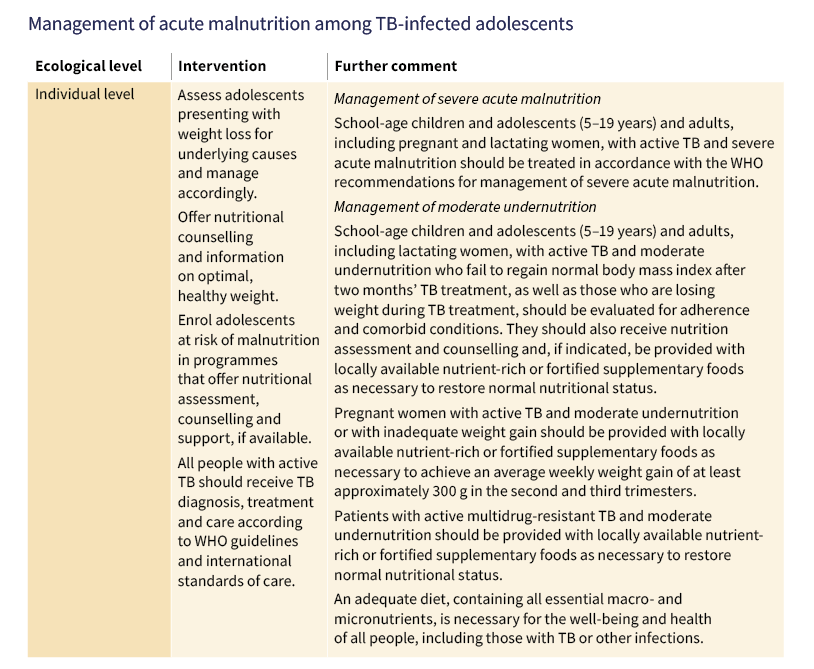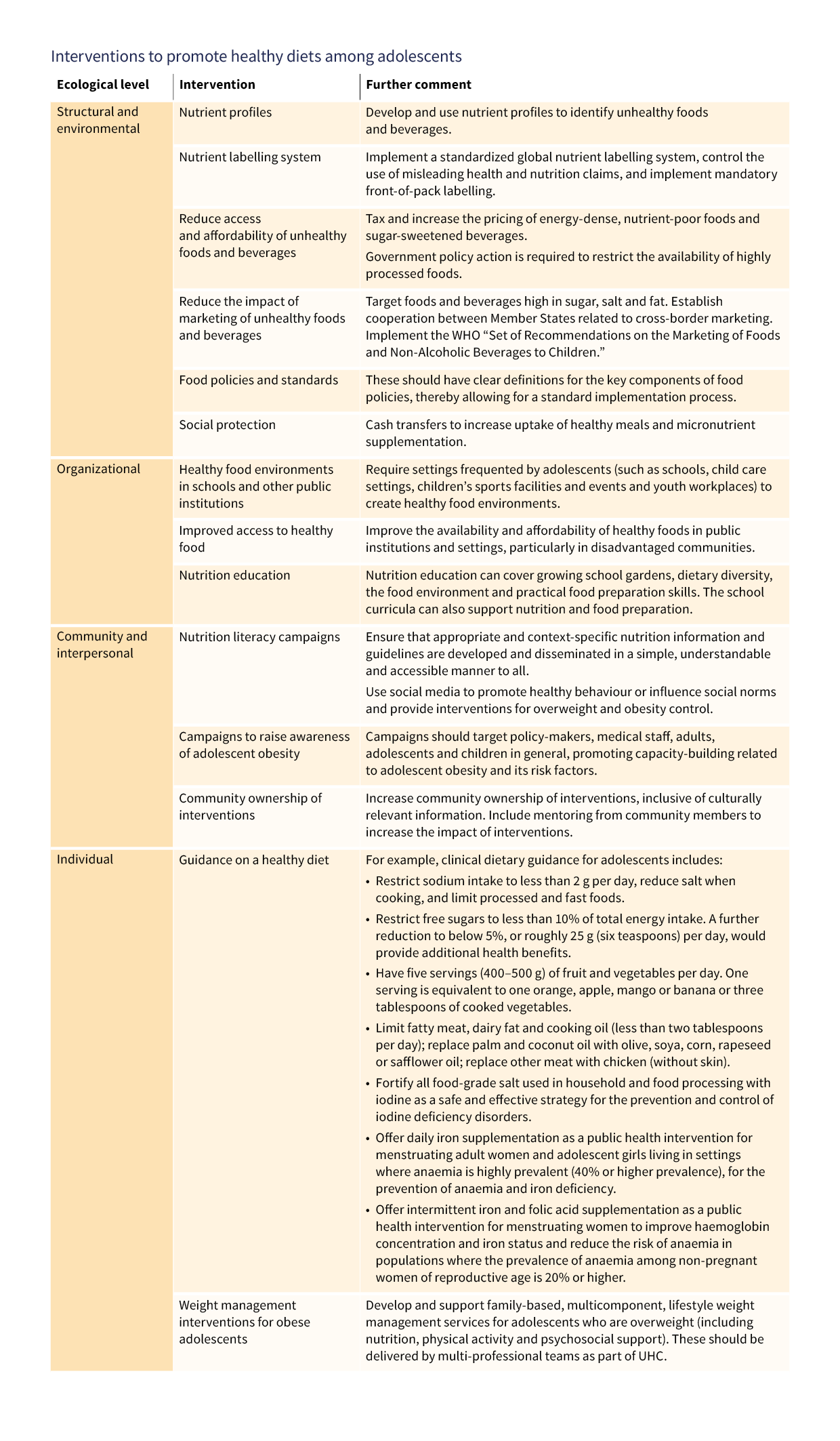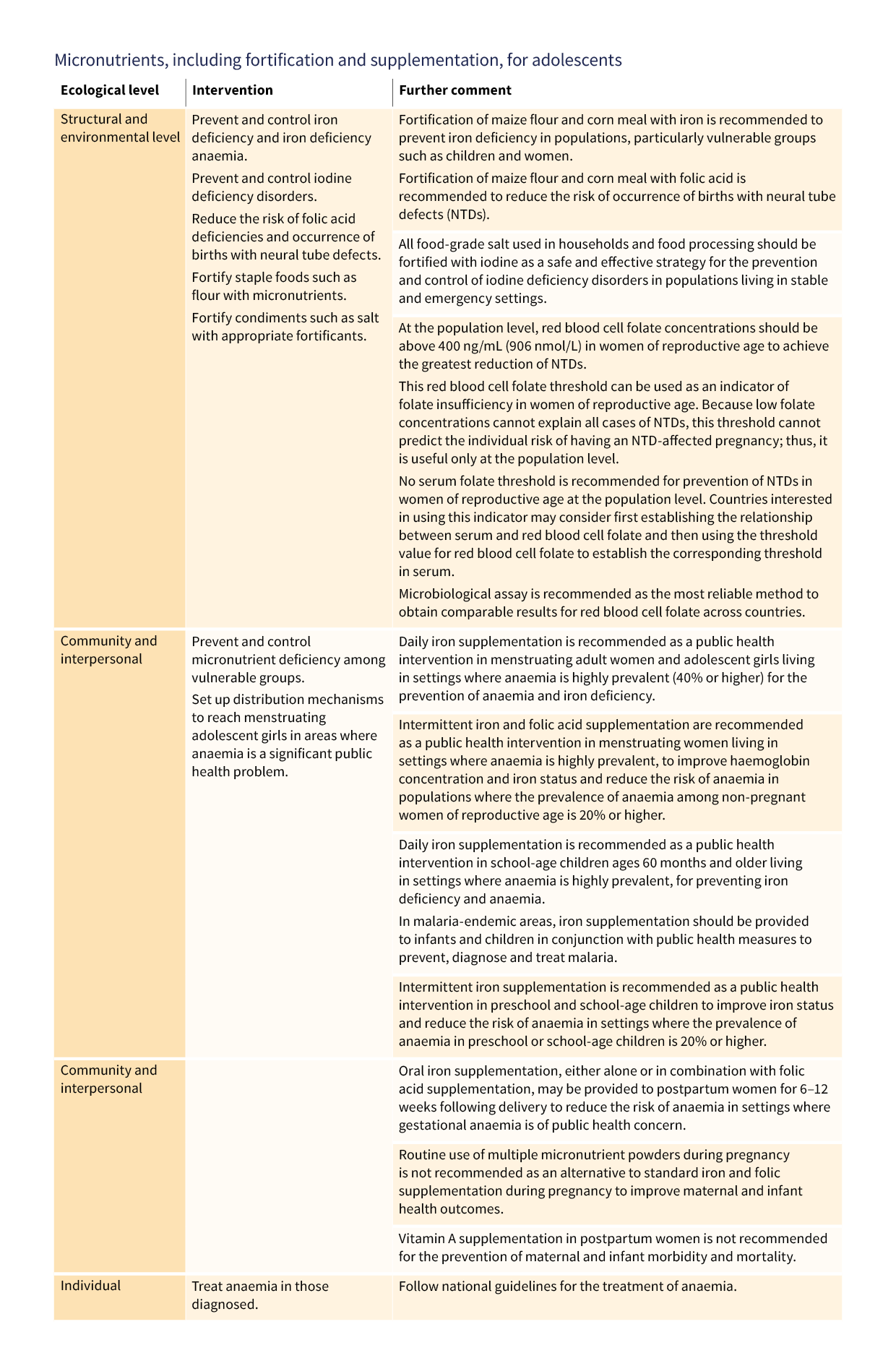
Optimal nutrition practices can have profound benefits for the current and future health and well-being of adolescents. During this second intense growth window, nutritional deficiencies that persisted from childhood can be addressed and catch-up growth may be possible. Additionally, adolescence provides an opportunity to adopt healthy eating habits that can have life-long impacts. The nutritional challenges that adolescents face include micronutrient deficiencies, food insecurity, suboptimal diet quality and obesity.
Achieving optimal nutrition among adolescents requires coordinated actions that ideally include health, education, social protection, media and other areas. Schools can deliver interventions to high-risk groups, for example, iron and folic acid supplementation for adolescent girls. At the same time, health professionals can implement screening and treatment programmes and are trusted for information.





